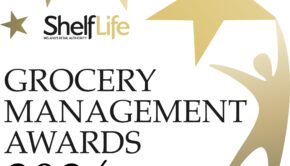Lenihan’s VAT hike is folly

The decision by the British government to slash the UK VAT rate to just 15% piles even more pressure on Finance Minister Brian Lenihan. Unless he reverses the Irish VAT increase, the flow of southern shoppers heading north will turn into a tidal wave
8 December 2008
At the beginning of this month the standard Irish VAT rate went up from 21% to 21.5%. On the same day the UK VAT rate was cut from 17.5% to just 15%.
When Brian Lenihan first announced an increase in the VAT rate in last October’s budget, the move appeared to be merely silly. The sort of fiscal tinkering, to which many politicians are hopelessly addicted, that would cause far more trouble and inconvenience for all concerned than any piffling amount of extra revenue it might possibly raise.
Now with the economy in meltdown and the UK having slashed its VAT rate, an increase in the Irish VAT rate looks downright suicidal. What were these guys thinking when they decided to jack up the VAT rate in an economy already enduring its worst recession for more than a generation? Has this government got a death wish?
Time to get a grip
Across the pond Prime Minister Gordon Brown and Chancellor of the Exchequer Alistair Darling had a firmer grip on economic reality. Not alone did they recapitalise the UK banking system, something which the two Brians had yet to get around to in this country at the time of writing, they also cut the UK VAT rate from 17.5% to only 15%.
The UK rate reduction also came into force on 1 December, the very same day that the Irish VAT rate went up to 21.5%. What this means is that the difference between the Irish and UK VAT rates has almost doubled from 3.5% to 6.5%.
The widening of the VAT gap between Ireland and the UK comes at the same time as the fall in the value of sterling against the euro had already made shopping north of the border extremely attractive to many Irish shoppers. Throw in a near-doubling in the cross-border VAT gap less than four weeks before Christmas and the flow of southern shoppers heading north turns into a tsunami.
As anyone who has shopped in Newry recently can testify, most of the cars in the city’s two main shopping centres have southern registrations. Consumers north of a line running roughly from Drogheda to Sligo already do a large proportion of their shopping in Northern Ireland.
It is traders in these towns close to the border who will be hit hardest by the VAT rate increase. Already Dundalk Town Council has written to Brian Lenihan begging the Finance Minister to cut the Irish VAT rate to 15%. Unfortunately, their pleas are likely to fall on deaf ears.
Irish shoppers travelling further for northern value
However, shoppers from much further inside the Republic are also occasionally travelling north. On a recent trip to Newry I noticed several Wexford-registered cars and even one from Cork in the shopping centre car parks.
Apart from Newry, Derry, Enniskillen, Armagh, Banbridge and Belfast have all benefited hugely from the upsurge in business coming from the Republic. In many of these towns up to 40% of their customers now travel up from the Republic. Meanwhile retailers in Dundalk, Drogheda, Sligo and other towns close to the border are in despair as their customers desert them for better value in the North.
And what has been the response of the government to this northern exodus of shoppers? When questioned on the matter Environment Minister John Gormley suggested that the government have to “do something” about the flood of shoppers heading north. Dream on John. Under EU law consumers can buy any amount of duty-paid goods in any other EU countries and bring them back to Ireland.
That Gormley seems to be unaware of this basic fact is shocking but sadly not surprising. Maybe the Environment Minister and Green Party leader should first focus on saving the economy before getting too carried away about saving the planet.
Northern Ireland First Minister Peter Robinson wasn’t having any of Gormley’s auld nonsense, mischievously commenting: “I encourage people to come to Northern Ireland. I am delighted that they built all those good roads so that people could come up quickly to Northern Ireland”.
A fool’s game
Faced with such a haemorrhage of shoppers, and tax revenue, the sensible thing for Brian Lenihan to have done in last October’s budget would have been at the very least not to widen the VAT gap with the UK any further. Instead he pushed up the already high Irish VAT rate by 0.5% to 21.5%. With retail sales down by almost 6% in the eight months to September, hiking the VAT rate was utter folly.
Just how foolish was demonstrated when the British government cut the UK VAT rate by 2.5% to 15% this week in an attempt to revive the ailing British economy. The 6.5% gap between the Irish and UK VAT rates is not sustainable.
With Newry less than an hour by car from Dublin Airport, the latest reduction in Northern prices, makes a trip north for some serious retail therapy even more attractive. This is going to hit Irish VAT receipts, which were already running 12% behind target, even harder.
If Brian Lenihan wants to avoid a further sharp fall in retail sales and tax receipts then he needs to swallow his pride and cut the VAT rate immediately. With many Irish retailers hanging on by a thread as consumer confidence evaporates, losing even more of their customers to Northern Ireland could well prove to be the final straw.
Unless Lenihan cuts the Irish VAT rate then this year’s dip in receipts will be followed by a complete collapse in 2009. Other tax revenues, such as those from income tax and corporation profits tax, will also collapse as more and more retailers in the Republic, unable to compete with cheaper competitors in Northern Ireland, close their doors. Don’t say that you weren’t warned Brian.



 Print
Print






Fans 0
Followers